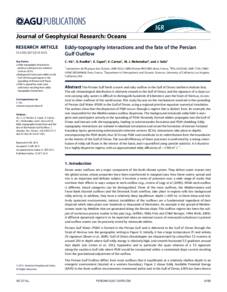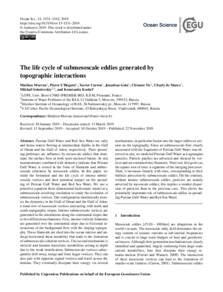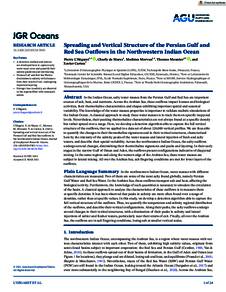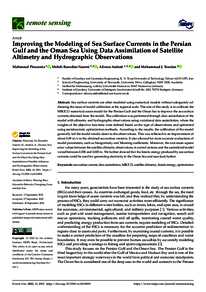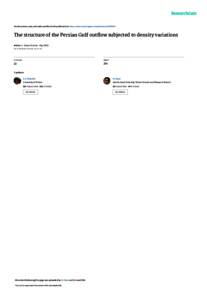وثيقة
Eddy-topography interactions and the fate of the Persian Gulf Outflow.
المعرف
DOI: 10.1002/2015JC011033
المساهمون
الناشر
Blackwell.
ميلادي
2015-10
اللغة
الأنجليزية
الموضوع
الملخص الإنجليزي
The Persian Gulf feeds a warm and salty outflow in the Gulf of Oman (northern Arabian Sea). The salt climatological distribution is relatively smooth in the Gulf of Oman, and the signature of a slope current carrying salty waters is difficult to distinguish hundreds of kilometers past the Strait of Hormuz, in contrast to other outflows of the world ocean. This study focuses on the mechanisms involved in the spreading of Persian Gulf Water (PGW) in the Gulf of Oman, using a regional primitive equation numerical simulation. The authors show that the dispersion of PGW occurs through a regime that is distinct from, for example, the one responsible for the Mediterranean outflow dispersion. The background mesoscale eddy field is energetic and participates actively to the spreading of PGW. Remotely formed eddies propagate into the Gulf of Oman and interact with the topography, leading to submesoscales formation and PGW shedding. Eddy-topography interactions are isolated in idealized simulations and reveal the formation of intense frictional boundary layers, generating submesoscale coherent vortices (SCVs). Interactions take place at depths encompassing the PGW depth, thus SCVs trap PGW and contribute to its redistribution from the boundaries to the interior of the Gulf of Oman. The overall efficiency of these processes is confirmed by a strong contribution of eddy salt fluxes in the interior of the basin, and is quantified using particle statistics. It is found to be a highly dispersive regime, with an approximated eddy diffusivity of -1700 m2 s-1.
المجموعة
ISSN
2169-9275
URL المصدر
قالب العنصر
مقالات الدوريات

